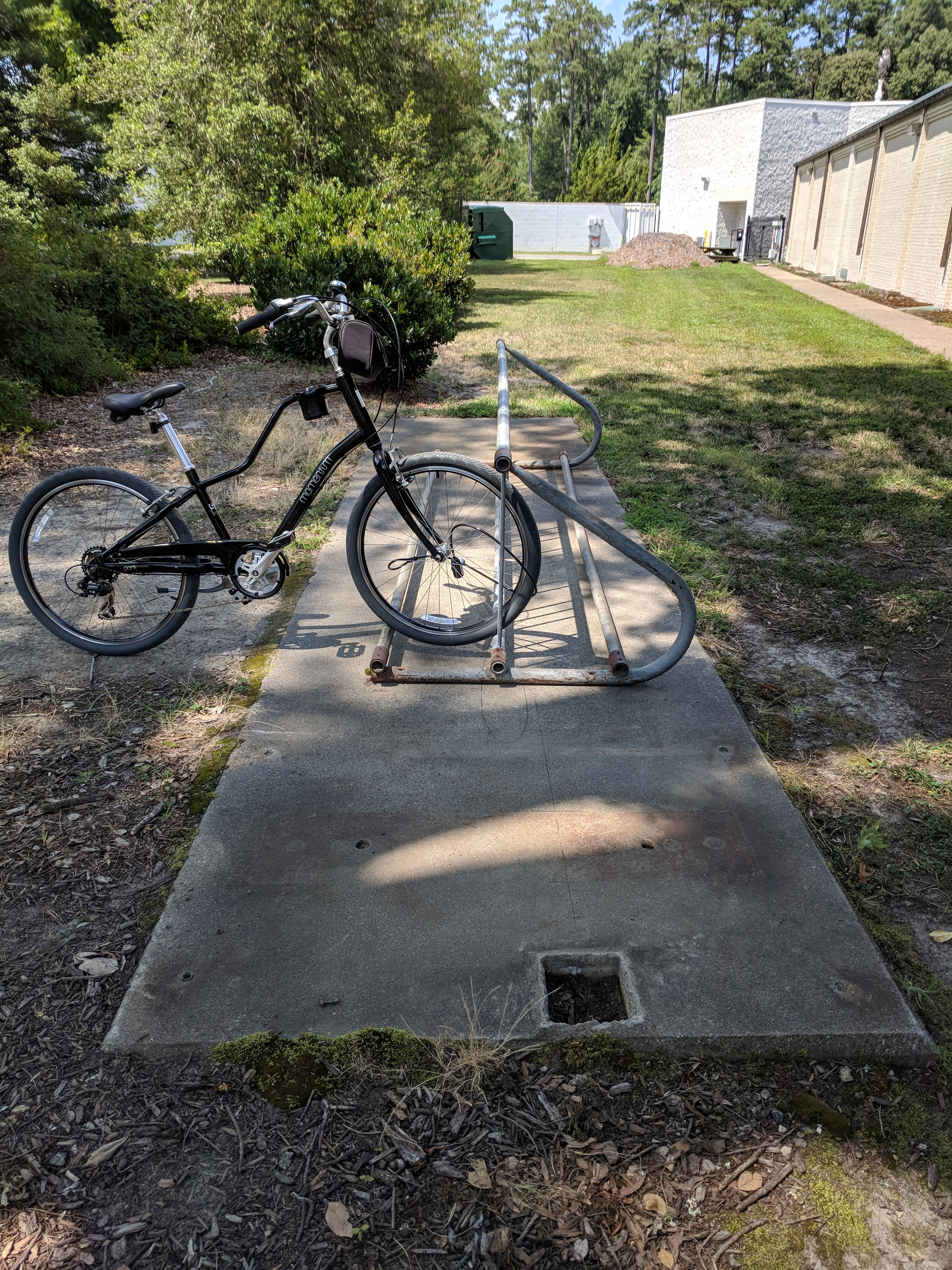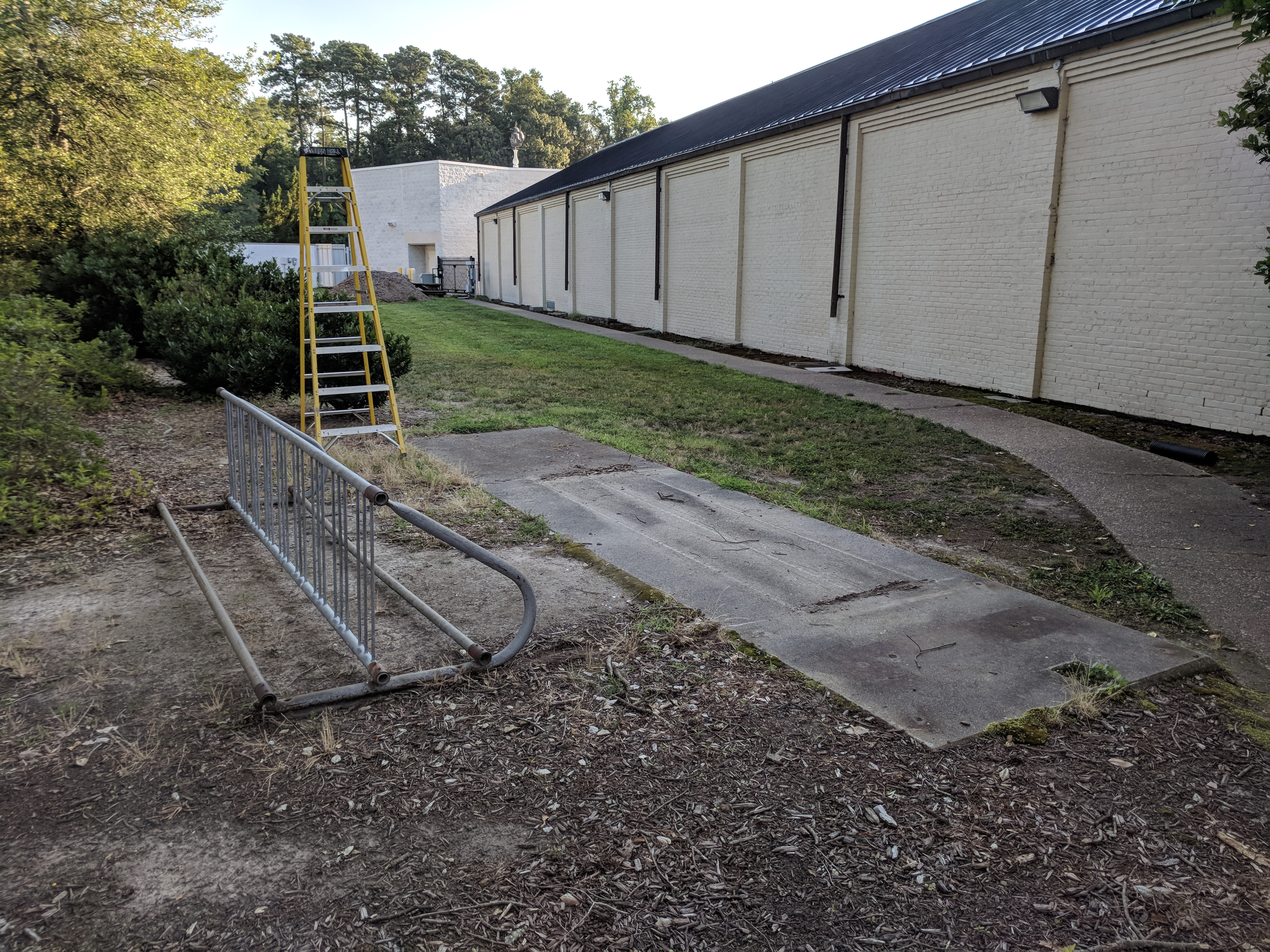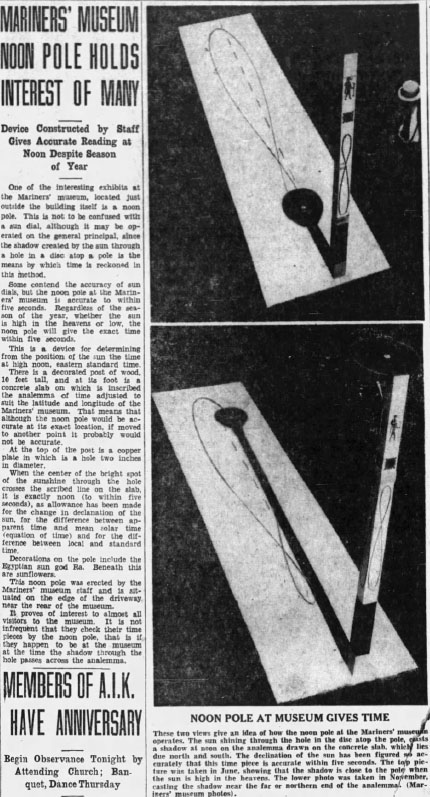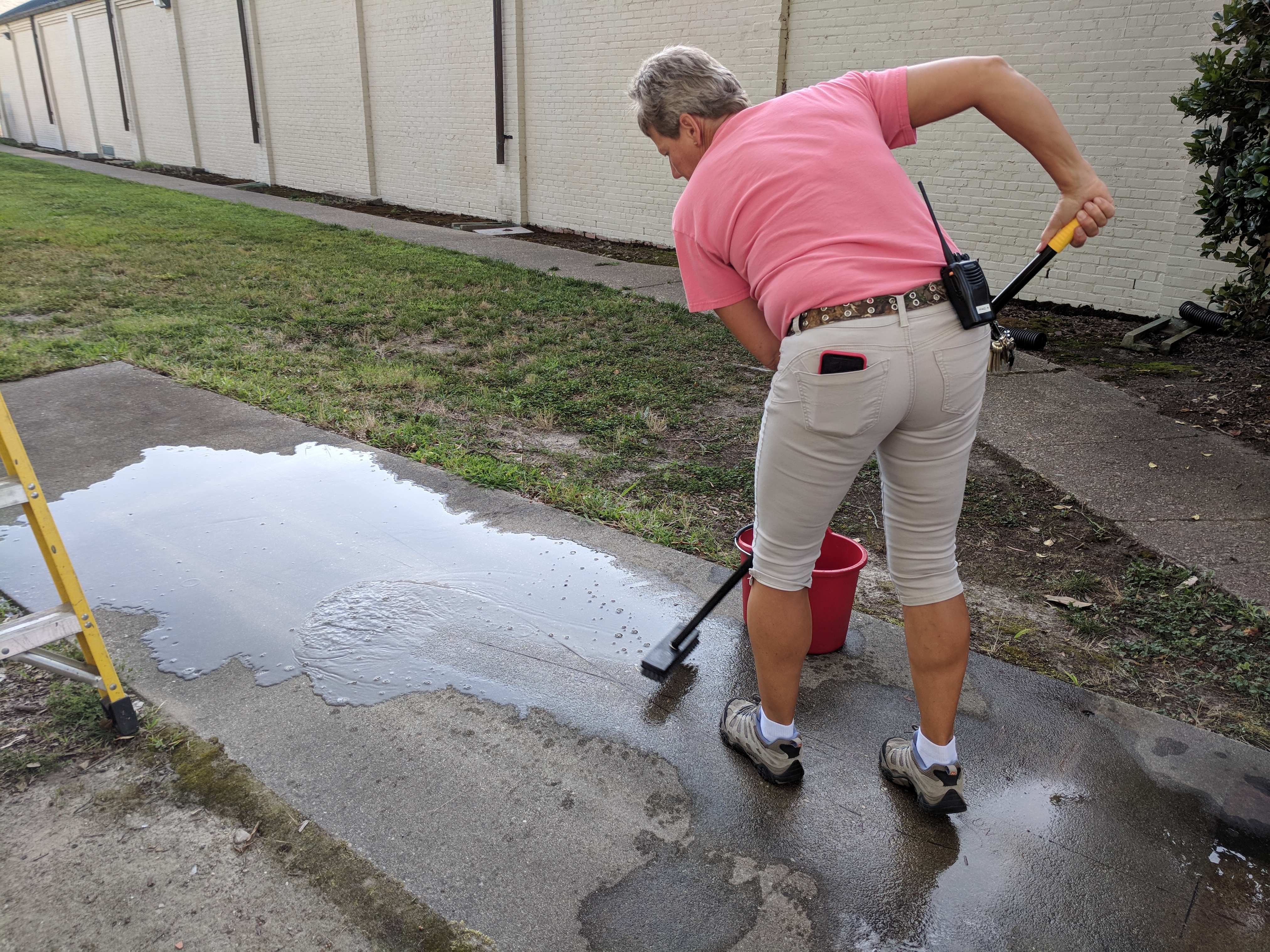Well, TECHNICALLY, I didn’t accession the bike rack. I accessioned the slab of concrete that sits UNDERNEATH the bike rack. But I promise, it’s not just any old slab of concrete! It is the site of a “noon pole” built by the Museum staff in 1938. What the heck is a ‘noon pole’ you ask? Well, I’ll tell you (and no, Lyles, dancers are not involved).


If you’ve ever paid attention to the position of the sun during the seasons of the year then you know the sun doesn’t appear at the same spot in the sky each day—it moves around. If you plot this movement from a single location at the same time of day for a year you end up with something that sort of looks like a lopsided or asymmetric figure-eight. This graphic representation of the sun’s movement is called an analemma. I know you’ve seen one, it’s that weird loopy thing that appears in the Pacific on almost every globe.

The Museum’s noon pole, designed by William Gatewood, consisted of a north-south running slab of concrete about five feet wide and about twenty feet long. An analemma adjusted for the Museum’s latitude and the sun’s declination was embedded in the surface of the concrete. At the southern end stood a pole ten feet tall topped with a copper plate that had a two-inch hole in it. The post, built by Sumner Besse, was decorated with “wood carvings and colored paint.” According to a newspaper report from the time the carvings included the Egyptian sun god Ra and sunflowers.

Although it operates upon the same principle, a noon pole is not a sun dial, it is simply a way of graphically displaying the movement of the sun throughout the year and can show you the sun’s exact position at high noon (Eastern Standard Time) no matter the season. At the time it was built, Museum staff contended their noon pole was accurate to within five seconds. A Daily Press article published on July 23, 1939 stated that visitors frequently “check their time pieces by the noon pole, that is if they happen to be at the museum at the time the shadow through the hole passes across the analemma.”

Although the pole disappeared long ago, the analemma is still present and, as I mentioned, currently provides the resting spot for the Museum’s one and only bike rack. Amazingly, staff continue to field questions about the noon pole by people who remember visiting the Museum and seeing it. Each time an inquiry arrives staff have struggled to discuss it which is why I decided to solve the problem by accessioning what’s left of it into the collection. A few weeks ago Tina helped me move the bike rack so we could get a good look at the analemma and figure out the best way to document it—which is when I found myself in the position of having to explain what I was doing to Howard (the Museum’s President for those of you who haven’t met him yet).


I’m currently trying to locate a copy of William Gatewood’s technical paper on the noon pole and if I find it I may try to reconstruct the pole (although there is an oak tree currently posing a bit of a shading issue). Until then, if you’re interested in seeing the analemma for yourself just head to the Museum’s business entrance and find the closest bike rack.